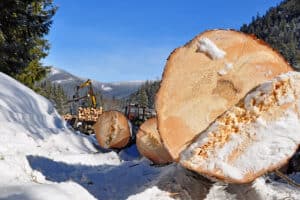What opportunities exist for “getting smart” in forest finance? I field versions of this question regularly from students seeking work in the timberland investment sector and will touch on related themes when teaching a one-day “Applied Forest Finance” course in February in Atlanta to forestry professionals looking to broaden their skills and offerings to current clients. To me, the opportunity is to be and remain knowledgeable and strong in at least one of the following areas in addition to forestry.
- Understand taxes. You can make a lot of money and lose a lot of money based on what you know or don’t know about timber taxes. Taxes matter. For example, tax laws encourage ownership changes. Issues associated with tax efficiency facilitated the movement of timberlands to institutional investors, Real Estate Investment Trusts (REITs) or subchapter S Corporations.
- Understand financial statements. They are the language of investors and executives. At the end of the day, the results of managerial business and capital allocation decisions get translated through audited financial statements which, like haikus and box scores, require interpretation and translation.
- Understand ownership structures. At a minimum, be able to explain a C-corporation vs. a REIT vs. the range of other single-tax entities (LLC, S-corporation, etc.)
- Understand true risks (and accounting for them). Timberland investment and forestry novices ask first about fire, bugs, disease and hurricanes. Forest investment professionals can help them put these into perspective and understand more about markets. Part of getting comfortable with timberland risk results from being familiar with available information on physical, operational, financial, and regulatory risks. The long investment horizons associated with forestry investments increase the interest in understanding the frequency and severity of potential risks. Forest analysts should be prepared to think about and answer “how should we think about timberland risks?”
- Understand markets and forestry data. Know current prices and industry trends. Wood prices provide a key signal in understanding the economics of a given wood basket today and historically in an easily communicated form. Be familiar with indices and data sources such as NCREIF, the FTR Index, and the US Forest Service. Remember, all forestry data is a sample…
- Understand how to communicate with a range of individuals. In person and in writing. I wrote a book – Loving Trees is Not Enough – and speak on this topic because my mentors, starting with my parents, have long emphasized its central importance to success. Forestry and investment analysts communicate with a broad range of groups and individuals, including researchers, clients, private consultants, executives, our bosses and colleagues. Our analysis has little value if it cannot be easily communicated, either by us or by others, as part of a presentation or in writing. We owe it to them to be able to explain our findings, our assumptions, how we came to these conclusions, and how they could help or affect them.
This content may not be used or reproduced in any manner whatsoever, in part or in whole, without written permission of LANDTHINK. Use of this content without permission is a violation of federal copyright law. The articles, posts, comments, opinions and information provided by LANDTHINK are for informational and research purposes only and DOES NOT substitute or coincide with the advice of an attorney, accountant, real estate broker or any other licensed real estate professional. LANDTHINK strongly advises visitors and readers to seek their own professional guidance and advice related to buying, investing in or selling real estate.










In the forestry echo chamber, there are no discussions about the confounding role that government bodies at all levels (Federal, state, land grant universities, et alia) play. In a free market setting where prices are set by the voluntary exchange of private property, prices would be a signal regarding the sustainability of the forest investment. In our system of state capitalism, crony capitalism, or whatever one chooses to call it, government interventions are constantly distorting the price signals. Probably the worst distortion is caused by the Federal Reserve, particularly the impact of Fed policies on the purchasing power of the dollar.
When I started forestry in late 1967, pine sawtimber stumpage was $7 to $8 per ton. Using the BLS calculator, that money had the same purchasing power as $46.53 to $53.18 today. In the Pee Dee area of South Carolina, pine sawtimber prices have been in the range of $22 to $25/ton for the last year. Doing a DCF analysis of pine planted in 1968 and scheduled for harvest in 2013 will produce a lousy rate of return if one considers the loss of purchasing power.
What should be the obvious answer is to get government completely out of forestry (and everything else). Of course, given the self-interest of government employees, we will have catastrophic global warming before that happens.
“Getting smarter” is not in the cards.
Travis Cork
Consulting Forester
Conway, SC